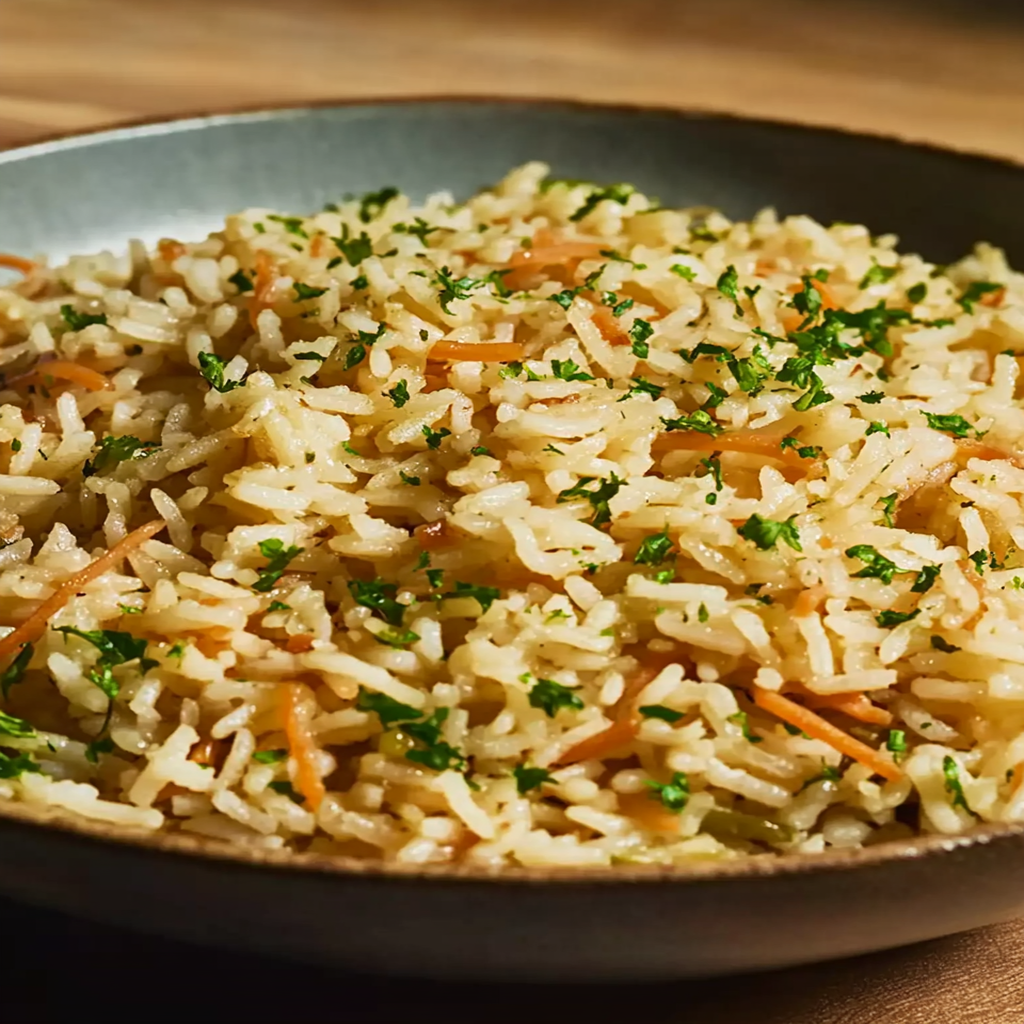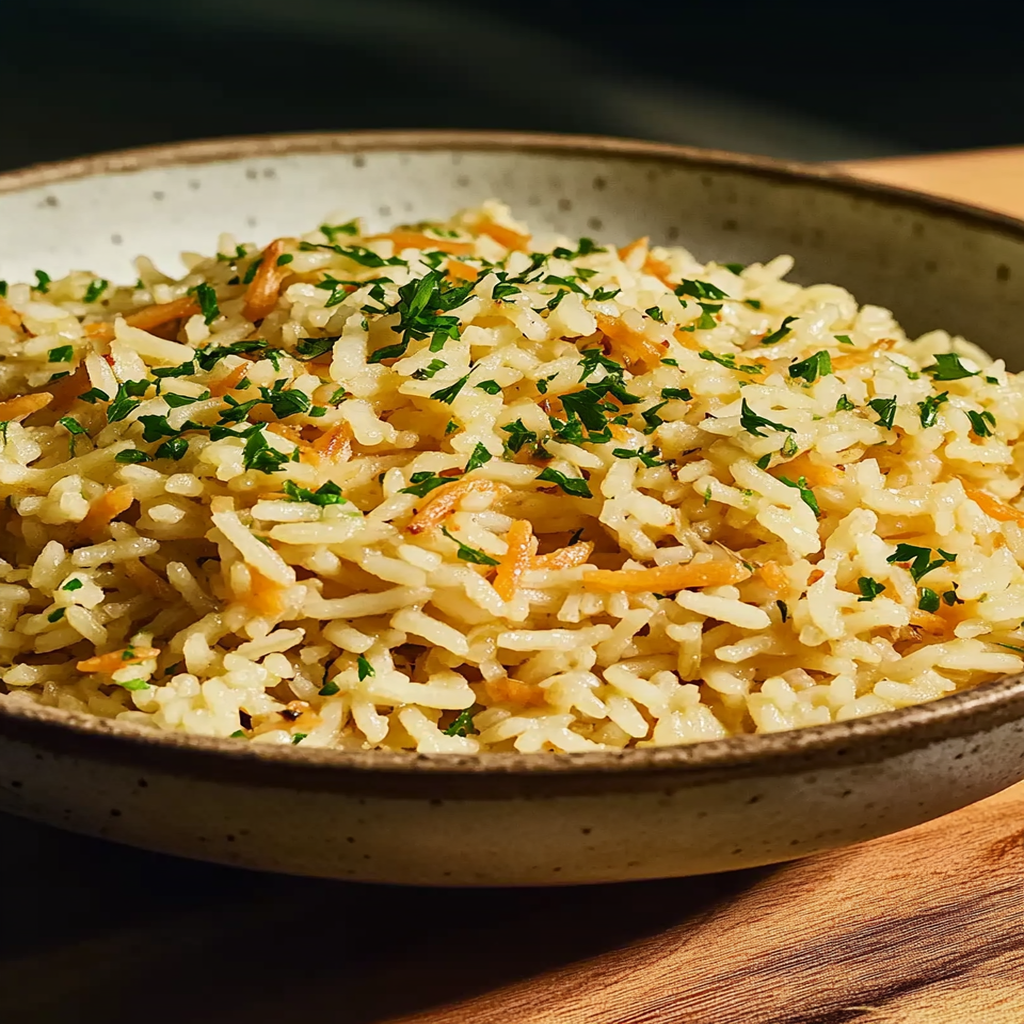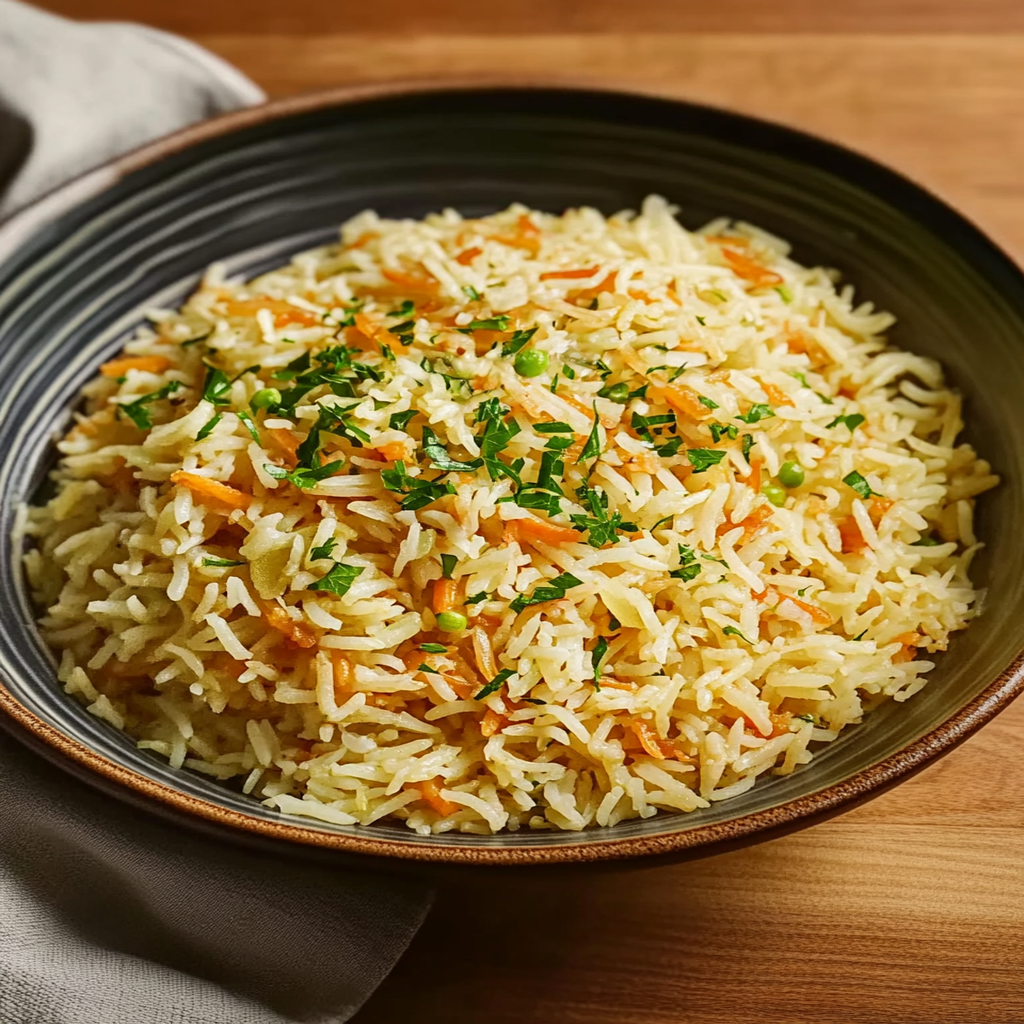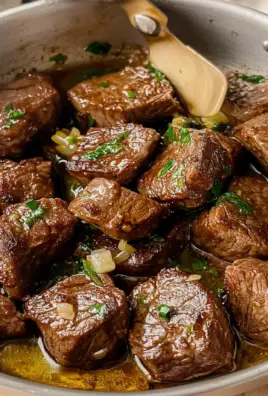Rice pilaf is a delightful dish that can elevate any meal with its rich flavors and appealing texture. This versatile recipe allows you to customize the ingredients to match your personal taste or whatever you have on hand. Whether you’re serving it at a family dinner, a holiday gathering, or as a comforting weeknight meal, rice pilaf never disappoints. This dish combines the nutty flavor of sautéed rice with aromatic spices and vegetables, creating a perfect side that pairs well with various proteins. Not only is it easy to prepare but it also satisfies those looking for a hearty yet healthy option. In this article, you’ll find everything you need to know about making homemade rice pilaf—from ingredients and step-by-step instructions to tips for achieving the best results.
Why You’ll Love This Rice Pilaf
- Quick and Easy: Minimal prep time and straightforward steps make this recipe stress-free, even for novice cooks
- Flavorful and Versatile: Enjoy outstanding flavor with ingredients you can easily customize by adding your favorites or adjusting spices
- Perfect for Any Occasion: Ideal for casual gatherings, holiday celebrations, or weeknight dinners
Ingredients for Rice Pilaf
Here’s what you’ll need to make this delicious dish:
- Basmati or Jasmine Rice: These long-grain varieties provide excellent texture; rinse them under cold water before cooking to remove excess starch.
- Vegetable or Chicken Broth: Use low-sodium broth for better flavor control; it enhances the overall taste without adding excessive salt.
- Onion: A medium-sized onion adds sweetness and depth; finely chop it for even cooking.
- Garlic: Fresh garlic cloves add aroma; use minced garlic for better distribution of flavor throughout the dish.
- Olive Oil or Butter: Both options work well; choose olive oil for a lighter dish or butter for richer flavor.
The full ingredients list, including measurements, is provided in the recipe card directly below.
How to Make Rice Pilaf
Follow these simple steps to prepare this delicious dish:
Step 1: Sauté the Aromatics
Heat olive oil or butter in a large skillet over medium heat. Add chopped onions and cook until they become translucent, about 5 minutes.
Step 2: Add Garlic
Stir in minced garlic and cook for an additional minute until fragrant. Be careful not to burn the garlic as it can turn bitter.
Step 3: Toast the Rice
Add rinsed basmati or jasmine rice to the skillet. Stir well to coat the grains with oil and toast them lightly for about 2-3 minutes.
Step 4: Pour in Broth
Carefully add vegetable or chicken broth into the skillet. Bring the mixture to a boil while stirring occasionally.
Step 5: Simmer
Once boiling, reduce heat to low and cover the skillet with a lid. Let it simmer gently for about 15-20 minutes until all liquid is absorbed.
Step 6: Fluff and Serve
Remove from heat and let it sit covered for another five minutes. Use a fork to fluff the rice before serving as a perfect side dish.
Transfer to plates alongside your favorite protein or vegetables for an inviting meal!

Tips and Tricks
Here are some helpful tips to ensure the best results for your dish:
- Even Cooking: Make sure all ingredients are cut to similar sizes for consistent cooking times.
- Temperature Control: Let ingredients reach room temperature before starting for better results.
- Add Extra Flavor: Experiment with herbs like thyme or bay leaves during cooking for additional taste dimensions.
With these guidelines in mind, you’ll be able to create an exceptional rice pilaf that will impress your family and friends! Enjoy your culinary adventure!
How to Serve rice pilaf
This rice pilaf is versatile and pairs wonderfully with:
- Grilled Chicken: The savory flavors of grilled chicken complement the aromatic spices in the rice pilaf beautifully.
- Roasted Vegetables: Their natural sweetness balances the dish, creating a colorful and nutritious plate.
- Stewed Lentils: This hearty pairing provides protein and fiber, making for a satisfying meal.
Feel free to pair it with your favorite sides for a personalized meal!
Make Ahead and Storage
- Make Ahead: You can prepare the rice pilaf up to two days in advance. Cook the rice, let it cool, and store it in an airtight container in the refrigerator. This saves you time on busy weeknights.
- Storing: Leftover rice pilaf can be stored in the fridge for up to three days. Use an airtight container to keep it fresh, ensuring that moisture does not spoil its texture.
- Reheating: To reheat, place the rice pilaf in a microwave-safe bowl. Add a splash of water to maintain moisture, cover it with a damp paper towel, and microwave on high for about two minutes or until heated through.
Suggestions for rice pilaf
Use the Right Rice Variety
Choosing the right rice is crucial when making rice pilaf. Long-grain varieties like basmati or jasmine are ideal because they remain fluffy and separate during cooking. Avoid short-grain rice, as it tends to be stickier and can result in a clumpy texture. Rinsing the rice before cooking can also help remove excess starch, leading to a better final product. Always measure your rice accurately to ensure a perfect balance with water or broth, enhancing flavor without making your dish too wet.
Don’t Overcook the Rice
Overcooking is a common mistake that can ruin your rice pilaf. Aim for a slightly firm texture, known as al dente, which allows the grains to retain their shape and prevents mushiness. Follow the recommended cooking time on the package but start checking a few minutes early. If you find yourself distracted during cooking, set a timer to avoid letting it simmer too long. Once cooked, let it rest covered for 5-10 minutes to allow flavors to meld without overcooking.
Season Properly
Seasoning is key to elevating your rice pilaf. Many cooks make the mistake of under-seasoning their ingredients or relying solely on salt. Instead, consider using aromatic spices like cumin or coriander for added depth. Broth instead of water can also enhance flavor significantly. Additionally, adding herbs such as parsley or cilantro just before serving gives freshness and vibrancy to your dish. Taste your pilaf as it cooks and adjust seasoning gradually for the best results.
Mind Your Liquid Ratio
Getting the liquid ratio right is essential for cooking perfect rice pilaf. A general rule is to use a 2: 1 ratio of liquid to rice; however, this may vary based on different rice types or other ingredients used in your recipe. Using too much liquid can lead to sogginess while too little can leave your rice undercooked. Always refer to specific instructions based on your chosen variety and consider any additional moisture from vegetables or meats in the dish.

FAQs
What is the best type of rice for pilaf?
When preparing rice pilaf, selecting the right type of rice is vital for achieving a delightful texture and flavor. Long-grain varieties such as basmati or jasmine are excellent choices due to their ability to remain fluffy and separate after cooking. These rices absorb flavors well while maintaining their structure. Avoid sticky short-grain rices unless you’re looking for a different texture altogether. Experimenting with different types can yield unique results, but sticking with long-grain will generally provide the best outcomes.
How do I add flavor to my rice pilaf?
Enhancing the flavor of your rice pilaf involves several techniques that transform simple ingredients into a delicious dish. Start by sautéing aromatics like onions and garlic in butter or oil before adding your rinsed rice; this adds depth right from the beginning. Consider using broth instead of water for cooking; it infuses rich flavors throughout the grains. Adding spices such as cumin, cardamom, or bay leaves during cooking can elevate your dish further. Finally, incorporating fresh herbs at serving will add brightness and freshness.
Can I make rice pilaf ahead of time?
Yes, you can prepare rice pilaf ahead of time, making it a convenient option for busy schedules! Cooked pilaf stores well in an airtight container in the refrigerator for up to four days. To reheat, simply add a splash of water or broth and microwave until warm throughout; this helps restore moisture lost during storage. For longer storage, you can freeze cooked pilaf for up to three months—just ensure it cools completely before freezing in portions.
How do I prevent my pilaf from being gummy?
To prevent gummy rice pilaf, start by choosing long-grain varieties that naturally resist stickiness when cooked correctly. Rinsing the uncooked grains removes excess starch that contributes to gumminess; do this until water runs clear before cooking. Ensure you maintain proper liquid ratios as too much liquid leads to sogginess while too little causes unevenly cooked grains. Lastly, avoid stirring excessively during cooking; let it simmer undisturbed so that steam cooks evenly without breaking down grains.
Conclusion for rice pilaf
In summary, mastering rice pilaf involves understanding several key components: choosing the right type of rice, avoiding overcooking, seasoning appropriately, and ensuring correct liquid ratios are all crucial steps toward achieving an exceptional dish. By following these suggestions, you’ll enhance both flavor and texture while avoiding common pitfalls that could affect your final product negatively. Remember that practice makes perfect! With each attempt at making this versatile side dish or main meal component, you’ll refine your technique further and enjoy delightful results every time you serve homemade rice pilaf.

Easy Rice Pilaf
- Total Time: 30 minutes
- Yield: Serves 4
Description
Rice pilaf is a delightful and aromatic side dish that enhances any meal with its fluffy texture and rich flavors. This easy rice pilaf recipe is perfect for busy weeknights or special gatherings, offering endless customization to suit your taste. With just a few ingredients, you can create a well-balanced dish that pairs beautifully with proteins such as grilled chicken or roasted vegetables. In under 30 minutes, this wholesome option will satisfy your cravings without compromising on flavor. Dive into the world of homemade rice pilaf and discover how simple it is to elevate your culinary repertoire.
Ingredients
- 1 cup basmati or jasmine rice
- 2 cups vegetable or chicken broth
- 1 medium onion, finely chopped
- 2 cloves garlic, minced
- 2 tablespoons olive oil or butter
Instructions
- Heat olive oil or butter in a large skillet over medium heat. Add the chopped onions and sauté until translucent, about 5 minutes.
- Stir in minced garlic and cook for an additional minute until fragrant.
- Add rinsed rice to the skillet and toast lightly for 2-3 minutes.
- Pour in the broth and bring to a boil, stirring occasionally.
- Reduce heat to low, cover with a lid, and let it simmer for 15-20 minutes until all liquid is absorbed.
- Remove from heat and let it sit covered for an additional 5 minutes before fluffing with a fork.
Notes
– Experiment with herbs like thyme or bay leaves during cooking for added flavor.
– For an extra kick, consider adding spices such as cumin or coriander.
– Leftover rice pilaf can be stored in the fridge for up to three days; simply reheat with a splash of water.
- Prep Time: 10 minutes
- Cook Time: 20 minutes
- Category: Side Dish
- Method: Sautéing
- Cuisine: Mediterranean
Nutrition
- Serving Size: 1 cup (200g)
- Calories: 210
- Sugar: 0g
- Sodium: 500mg
- Fat: 4g
- Saturated Fat: 1g
- Unsaturated Fat: 3g
- Trans Fat: 0g
- Carbohydrates: 40g
- Fiber: 2g
- Protein: 4g
- Cholesterol: 0mg





Leave a Comment